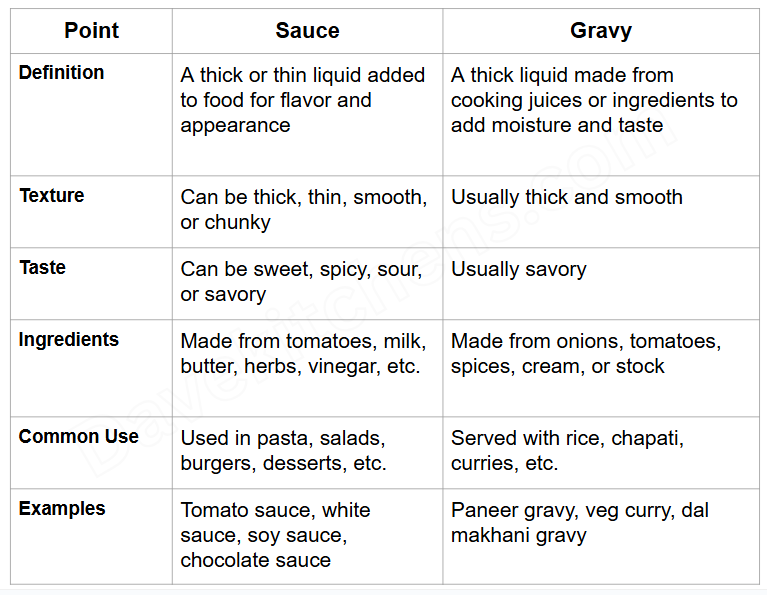
SAUCES & GRAVIES
SAUCES & GRAVIES are the secret behind flavorful, visually appealing dishes. From creamy béchamel to rich brown gravy, they add depth, texture, and balance to meals.


SAUCES & GRAVIES
Sauce
A sauce is a liquid or semi-liquid preparation that is served with food to enhance its flavor, texture, appearance, and moisture content. It acts as a bridge between components of a dish, tying together different textures and tastes. Mother sauces are the base sauces used in many recipes.
Once you know these, you can create hundreds of other sauces by just adding a few ingredients. They were first grouped by a famous French chef named Auguste Escoffier, and they’re still taught in culinary schools today.
Gravy
Gravy is a savory, pourable sauce made primarily from the juices or drippings of cooked meat, thickened with ingredients like flour, cornstarch, or roux, and often flavored with stock, herbs, and spices.
Difference between sauce & gravy: -
Gravies are the thin, flavorful juices that come out when meat or vegetables are cooked, while sauces are prepared mixtures that can be either liquid or semi-liquid.
Gravies are products like flavoring, thickening, and coloring agents that have been cooked with liquid; sauces have a strong, light hand for mixing, a delicate sense of taste, and a sharp sense of smell.
Gravies usually need a lot of spices, along with onion, ginger, garlic, and tomato to become smooth and tasty. On the other hand, a good sauce stands out with its bright look, rich smooth texture, unique taste, and natural flavor.
Gravies usually don’t use a roux (a mix of flour and fat) and may not help much with digestion. Sauces, on the other hand, not only add moisture to food but also help with digestion—for example, mint sauce or apple sauce often served with roast pork.
Sauces can boost the nutritional value of a dish by adding healthy ingredients, while gravies usually add flavor and texture but offer less nutrition overall.



